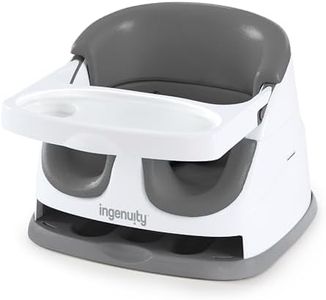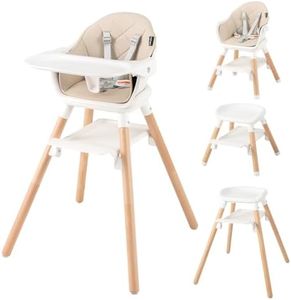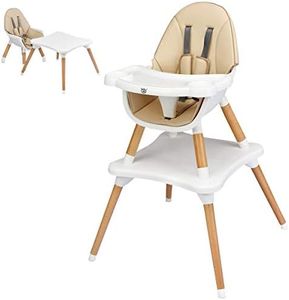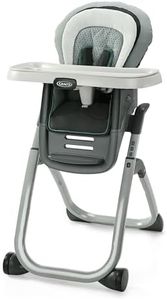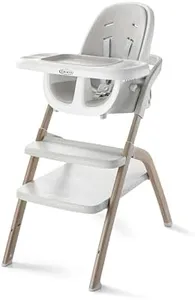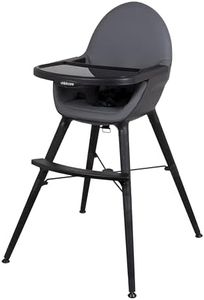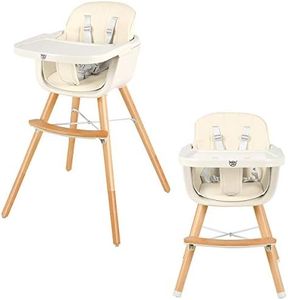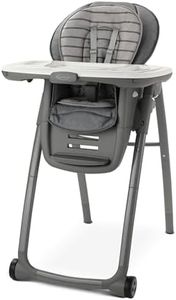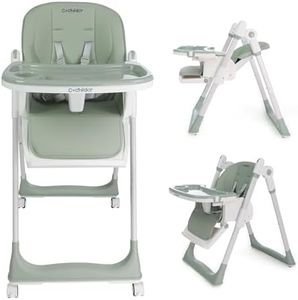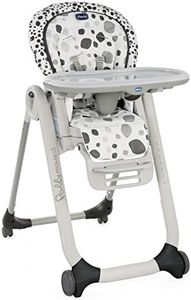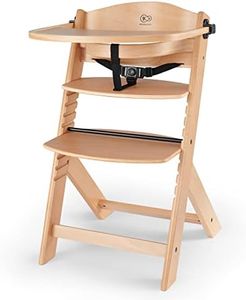We Use CookiesWe use cookies to enhance the security, performance,
functionality and for analytical and promotional activities. By continuing to browse this site you
are agreeing to our privacy policy
10 Best High Chairs
From leading brands and best sellers available on the web.Buying Guide for the Best High Chairs
Choosing the right high chair is an important decision for parents and caregivers, as it ensures a safe and comfortable place for your baby or toddler to eat, play, and participate in family meals. The right high chair will make feeding time easier, cleaner, and safer, while also being easy to move and maintain. Focus on your space, lifestyle, and your child's age and developmental needs as you review the key features.Safety HarnessA safety harness is the strap system that secures your child in the high chair, preventing slipping or climbing out. The most common types are 3-point or 5-point harnesses. A 3-point harness secures at the waist and between the legs, while a 5-point harness also includes shoulder straps for extra security. For younger or more active children, or if your child tends to wiggle, a 5-point harness is generally safer. Always check that the harness is easy to use, adjustable, and comfortable, as this will help you keep your child secure during meals.
AdjustabilityAdjustability refers to features like multiple seat heights, reclining backrests, and removable trays that allow the high chair to fit your child as they grow, and to fit different table heights. Some high chairs can even convert into toddler chairs or booster seats. If you want a chair to last through multiple stages, look for one with good adjustability. If you have tight dining spaces or specific table heights, pay attention to whether the chair can be adjusted to fit comfortably for your needs.
Ease of CleaningHigh chairs see a lot of mess, so easy cleaning is vital. Some chairs have machine-washable seat covers, smooth plastic surfaces without cracks, and trays that can be removed and washed separately or even put in the dishwasher. If you want to save time and frustration, look for designs with few nooks and crannies for crumbs to hide, and materials that can be wiped down quickly. If your child is especially messy, prioritizing easy-to-clean features will make your day-to-day routine simpler.
Tray DesignTray design includes how easily the tray can be attached or detached, whether it adjusts forward and backward, and if it offers features like a snap-on cover or cup holder. Some trays can be operated with one hand, which is very helpful when you're holding your child or other items. If you plan to use the high chair regularly, a simple and adjustable tray that can be repeatedly removed and cleaned without fuss will make each meal less stressful.
Portability and StoragePortability and storage are about how easy it is to move and put away the high chair. Some high chairs can be folded flat, have built-in wheels, or are lightweight for easier transport between rooms or for storage. If your home has limited space or if you travel frequently or visit friends and family with your child, a portable or easily stored chair can be a big advantage. If your high chair will stay in one place, sturdiness might be more important than portability.
Weight and Age RangeWeight and age range tells you for how long your child can safely and comfortably use the chair. Some high chairs are designed for infants and can recline for early feeding, while others are for older babies who can sit up unassisted. It's important to match the chair's specifications to your child's current age and expected growth, so you choose a chair that your child can use for as long as possible without compromising safety or comfort.
Stability and FootprintStability refers to how unlikely the chair is to tip or move when your child shifts their weight. A wider base and sturdy construction usually offer better stability, but may take up more room (footprint). If your child is very active or you have pets or other children at home, look for a high chair with a solid, stable base. On the other hand, if your dining space is small, you may want a chair with a smaller footprint that still feels secure. Always balance your need for safety and space.
